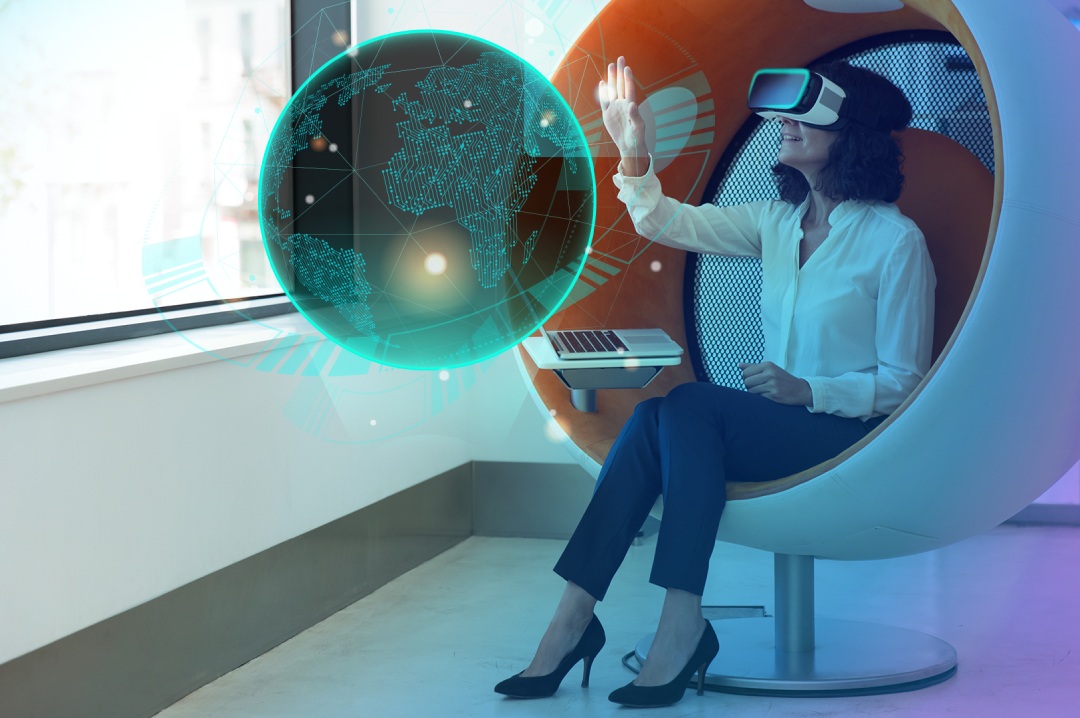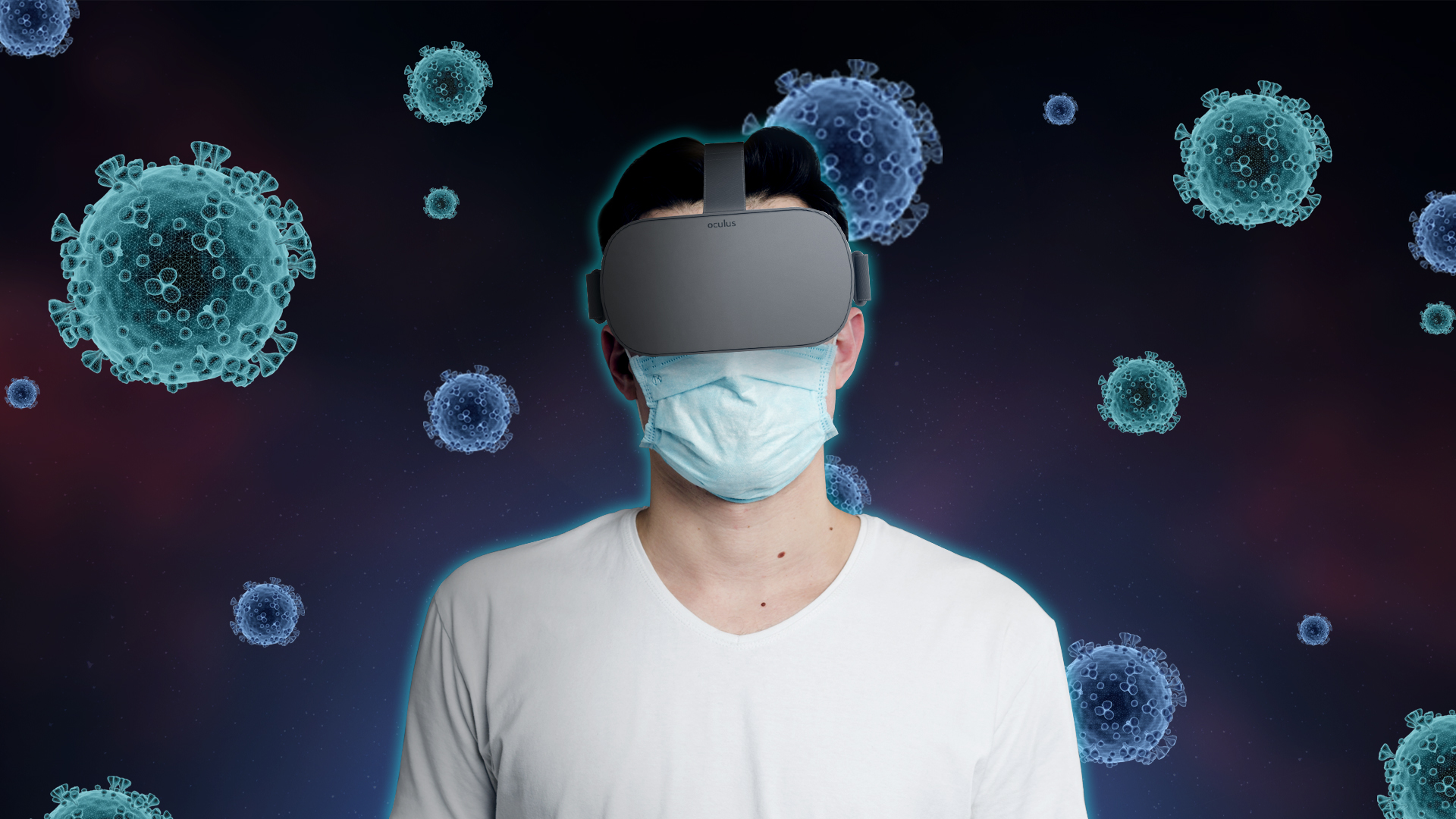Extended Reality (XR) in Future Pandemics Human beings are hardwired to be curious. This intrinsic trait of Homo Sapiens has taken us to the vastness of space and the depths of the oceans! Technology is the stepping stone to a brighter and newer tomorrow for humans, and at the same time, it is also something that helps us adapt to change like the COVID-19 pandemic.
The advancements in the tech world are so huge that they have contributed significantly even for circumstances they were never meant for – global pandemics! This is especially true in the case of Extended Reality (XR).
To understand what the future holds and how XR has been contributing to the mitigation of losses because of the pandemic, we need to clearly understand the crux of XR.
What is Extended Reality (XR)?
Extended Reality (XR) is an umbrella term that encompasses the following revolutionary technologies:

Virtual Reality
Virtual Reality is the technology where the user is completely immersed in a computer-generated 3D space that is similar to or different from the real world.
Augmented Reality
Augmented Reality is often referred to as the sweet spot between the real world and the virtual world.
AR allows to ameliorate objects in the real world and alters your perception of it through an interface like a screen or headset.
Mixed Reality
Just like AR, Mixed Reality also amplifies the experience of the real world through the graphics generated by computers.
Mixed Reality is very similar to Augmented Reality with one key difference.
The difference is that the graphics overlayed in the real world is interactable in the case of MR.
How Can XR Help in a Post-Pandemic World?
The applications of Extended Reality are virtually limitless! The coronavirus pandemic has spun the wheel of creativity among tech enthusiasts who then came up with radically wild applications of VR, AR and MR for the everyday user.



If words do not suffice you, here are some stats. Back in 2019, in the pre-pandemic period, the global XR market was expected to grow to about 15 billion dollars. Given the pandemic’s effect of shattering economies, it would be intuitive to think that the growth would have been much lower.
You would be surprised to know that not only did the global XR market grow, but it thrived amidst the pandemic, growing to a staggering 18.8 billion dollar – about 78% over 2019.
Companies all over the globe are heavily investing in Extended Reality technologies, especially after the onset of the pandemic, because that seems to be the only way forwards.
The leaders at the World Health Organization (WHO) along with leading scientists studying climate change have affirmed that the novel coronavirus pandemic is just one of the many that are yet to arise.
Extended Reality for Online Shopping
Pandemics have set a new standard of normal in many places across the world. People are reluctant to walk into crowded stores and rather purchase anything they want online. According to Statista, more than 20% of the sales are bound to take place on the internet by 2022!
Brands like Lenskart and IKEA were among the first to realise and jump in on the opportunity. They refined their e-commerce side of things to prove an all-around better experience for their customers.
IKEA has even gone to the extent of creating an entire app from the ground up dedicated to XR. More specifically – the AR aspect of XR.
The app, called ‘IKEA Place’, helps users and customers to better visualise their product by allowing them to place it virtually in their living space. They can choose any piece of furniture, place it on the spot of their choosing, and explore it by from all angles.
Lenskart has taken a similar approach. The Lenskart app allows you to try on any of their spectacles virtually, with the mobile application.
Extended Reality in the Healthcare Sector
If anything, the COVID-19 pandemic has taught us that our healthcare system still has a long way to go. For that to happen, more investment and technological interventions are required.
Innovations in the space of XR could be the next front of the healthcare industry because it helps to lower the operational costs of clinics and hospitals, allows for better diagnosis and enables better patient-doctor communication among others.



With Extended Reality technologies, doctors would be able to examine the internals of their patients with unprecedented detail without any physical intervention whatsoever!
The foremost hurdle the world face at the beginning of the coronavirus pandemic is diagnosing the viral disease in patients. The slow and inaccurate diagnosis resulted in the loss of thousands of lives. Since XR allows for 3D viewing of objects, the diagnosis of bacterial or viral infections can be made faster and more accurate.
AR and MR technologies have immense potential to aid surgeons in their operations. They can assist with complex surgeries, and the surgeons can even intuitively interface with surgical robots to reach places in the human bodies with impeccable precision. Combining this with the innovations in nanotechnology for healthcare can propel the healthcare industry many decades ahead in a few short years.
Check out our blog on how VR is playing a key role to fast-track vaccine development for future pandemics.
Extended Reality for Offices and Corporates
Extended Reality (XR) solutions for enterprises and corporates have always been a blessing in disguise.
Error-free and timely communication is a key aspect of the efficient performance of company divisions. All task reports should also be promptly submitted to the managerial and executive members of the company to facilitate strategic decision-making.



Unfortunately, with social distancing, the entire chain of command and communication went haywire, mostly in companies that did not embrace XR solutions.
XR solutions offer executives of an organisation the luxury of an in-person meeting whilst being hundreds or thousands of miles apart! When communication is so much superfluous, you take solace in knowing that your business is going to run smoothly as ever.
Extended Reality Facilitating Distance Education
The system of education has not changed much since the industrial revolution. Distance learning was a problem even before the coronavirus pandemic. People living in remote and inaccessible areas like hilly regions and rural areas were deprived of quality education.



Fortunately, 2020 has brought about great strides in distance learning with the internet.
Students can reap the benefits of a classroom and a teacher through immersive digital experiences with the help of XR technologies. But it does not end there. They can understand and grasp complex concepts much faster using better 3D renders and visual graphics.
Above all, it is not limited to just developed cities. Students even in under-developed and third-world countries can reap the rewards.
Although this concept is still in its rudimentary stages, it is certain to expand at much larger scales for future pandemics.
Conclusion
Extended Reality (XR) is extremely underrated and underappreciated by many. However, its applications are openly embraced.
If you have a smartphone launched in 2019 or 2020, chances are that you are already interfacing with XR technologies in your everyday life.
XR is certainly not free from any hurdles. But the future of tech, particularly in a world of pandemics, seems to have a ray of hope amidst the chaos!










